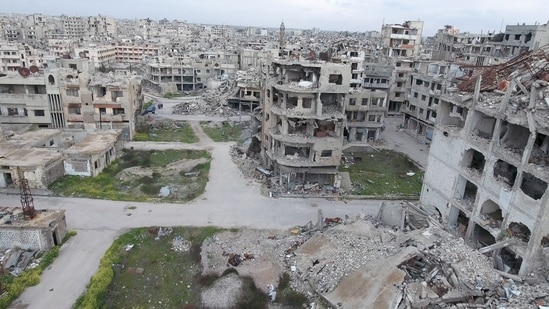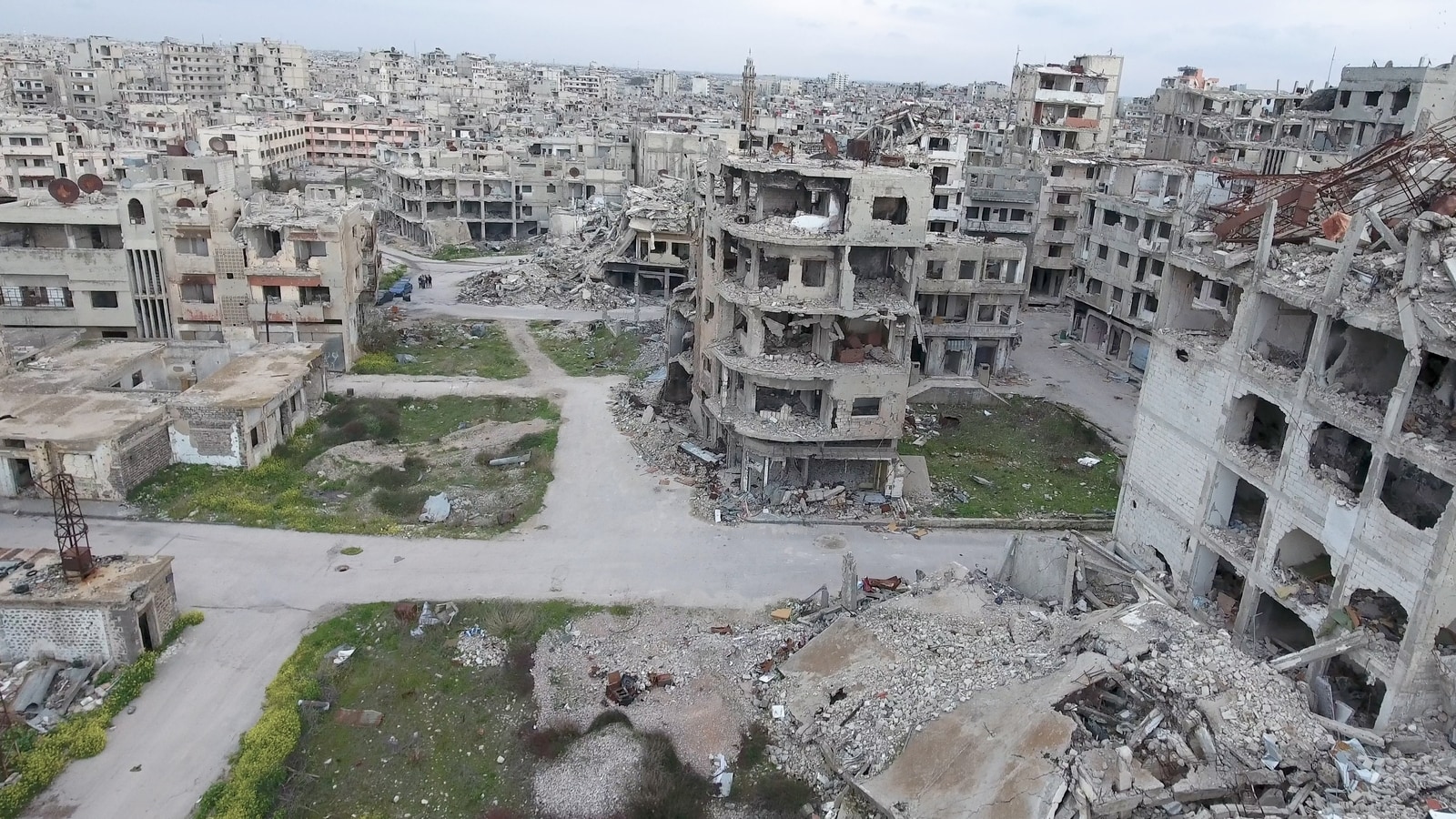Published on: Aug 16, 2025 05:18 pm IST
This paper is authored by Kabir Taneja, ORF.
Syria has been in turmoil since 2011 when the Arab Spring wave of protests spread across the Middle East-North Africa (MENA) region, challenging President Bashar Al Assad’s longstanding, familial rule of the country which began with his father, Hafez Al Assad, who took over in 1971. In December 2024, the Assad family’s power grip over Damascus ended, paving the way for Ahmed Al Sharra of the Hay’at Tahrir Al Sham (HTS) militant group to take charge. This brief examines the dramatic change of power in Syria and its regional and global implications, and analyses how Al Sharaa, a former jihadist, is quickly transforming himself into a regional statesman.
 The city of Homs, a rebel stronghold during the Syrian Civil War. (Shutterstock)
The city of Homs, a rebel stronghold during the Syrian Civil War. (Shutterstock)
Since October 2023, the volatility of West Asia has been at the forefront of regional and global conversations on security. Amidst the turmoil in Gaza, Israel’s war against Hamas and Hezbollah, security concerns in the Red Sea following attacks by the Houthis, and the prolonged Ukraine conflict, the international community was caught unawares as the Assad government in Syria disintegrated in December 2024. This was especially true for the Western powers that have piloted international multilateral institutions since World War II.
At the end of December 2010, in the town of Sidi Bouzid in Tunisia, a fruit seller set himself on fire to protest corruption and intimidation by the police. The outrage it sparked was the beginning of a region-wide mass protest movement, popularly called the Arab Spring, which spread across the Arab world, challenging leaderships and monarchies that had been holding power for decades. In Syria, people mobilised against the Assad family, who also belonged to the minority Alawite community in a majority Sunni State, challenging their rule. This popular mobilisation started with anti-Assad graffiti sprayed around the town of Dar’a by some teenagers, who had to face severe consequences for doing so.
This paper can be accessed here.
This paper is authored by Kabir Taneja, ORF.

